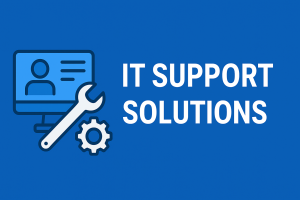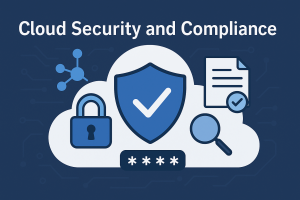Businesses increasingly rely on technology to manage operations, communicate with customers, and drive growth. When systems fail unexpectedly or security vulnerabilities arise, productivity can be disrupted, customer trust can be affected, and financial losses can mount quickly. Proactive support and maintenance services offer a solution by identifying and resolving issues before they escalate, helping businesses maintain seamless operations and avoid costly downtime.
At Redtgs, proactive support goes beyond troubleshooting—it’s about anticipating problems, optimizing performance, and protecting critical infrastructure. By implementing continuous monitoring, scheduled maintenance, and timely updates, businesses can prevent disruptions, reduce repair expenses, and focus on strategic growth.
A proactive maintenance strategy ensures that systems are always operating at peak efficiency. Regular diagnostics, security patches, and disaster recovery plans help safeguard data and prevent outages, ultimately saving both time and money. In the sections that follow, we will explore how adopting such an approach strengthens operations, enhances security, and contributes to long-term business success.
What is Proactive Support and maintenance services?
Proactive support and maintenance services refer to a strategic approach where issues are addressed before they cause major disruptions. Instead of waiting for a system failure or emergency repair, teams monitor systems continuously, perform routine checks, update software, and optimize processes to ensure optimal performance.
This approach contrasts with reactive maintenance, where problems are fixed only after they occur. While reactive maintenance may seem cost-effective in the short term, it often leads to larger, more expensive issues in the future. Proactive support is designed to mitigate risks, reduce downtime, and improve system reliability.
How Proactive Maintenance Works
Proactive maintenance involves several key practices:
- Continuous Monitoring – Systems are constantly monitored to detect potential vulnerabilities, performance lags, or signs of hardware failure.
- Routine Updates and Patch Management – Keeping software, firmware, and security patches up-to-date prevents exploits and ensures compatibility.
- Scheduled Health Checks – Regular diagnostics on servers, networks, and applications help identify early warning signs of system degradation.
- Backup and Disaster Recovery Planning – Data is regularly backed up, and plans are in place to quickly recover from unexpected disruptions.
- User Training and Documentation – Employees are trained on best practices and troubleshooting techniques, which reduces the need for intervention.
- Optimization of Resources – Systems are fine-tuned to improve efficiency and reduce unnecessary resource consumption.
By implementing these practices, businesses can address issues before they escalate, improving uptime and enhancing operational efficiency.
Time Savings from Proactive Support
Downtime is a silent killer for productivity. A server outage, software malfunction, or security breach can halt workflows, delay projects, and overwhelm support teams. Proactive maintenance eliminates many of these risks through:
- Early Detection of Issues – Problems are often identified in the monitoring phase, allowing IT teams to intervene before systems crash.
- Automated Alerts and Reports – Automated systems notify teams about anomalies, enabling swift resolution without waiting for users to report problems.
- Minimized Response Time – Predefined escalation protocols and diagnostic tools ensure that issues are addressed quickly, preventing prolonged disruptions.
- Better Planning – Maintenance tasks are scheduled during non-peak hours, avoiding interference with critical business operations.
The result is significantly reduced downtime, which translates into uninterrupted workflows, faster turnaround times, and improved service delivery.
Cost Savings with Proactive Maintenance
Investing in proactive maintenance may seem like an upfront expense, but it offers substantial savings in the long run:
- Lower Repair Costs – Addressing issues early prevents costly repairs, data recovery services, or equipment replacements.
- Avoided Emergency Expenses – Emergency interventions often come with higher rates due to urgency. Proactive support avoids these scenarios.
- Reduced Labor Costs – Automated monitoring and preventive actions reduce the need for manual troubleshooting and repetitive support tasks.
- Optimized Resource Utilization – Proper maintenance ensures that hardware and software perform at peak efficiency, extending their lifespan and reducing the need for frequent upgrades.
- Prevented Revenue Loss – Downtime directly affects sales, client satisfaction, and trust. Proactive maintenance helps safeguard revenue streams.
- Compliance and Security Savings – Regular updates and security checks ensure compliance with industry standards, preventing fines and reputational damage.
In summary, proactive support is an investment that yields exponential returns through enhanced efficiency and reduced operational risks.
Why Businesses Should Adopt Proactive Support Now
As digital threats become more sophisticated and competition intensifies, businesses cannot afford to be complacent about system maintenance. Here’s why adopting proactive support is crucial:
- Cybersecurity Threats Are Escalating – Ransomware, phishing attacks, and data breaches are on the rise, making routine security checks indispensable.
- Remote Work Has Increased Complexity – With employees working from different locations, systems must be robust, secure, and consistently optimized.
- Customer Expectations Are Higher Than Ever – Clients expect seamless service. Frequent downtimes erode trust and loyalty.
- Technological Advancements Require Adaptation – Software and hardware evolve constantly. Keeping pace with updates is necessary to maintain compatibility and performance.
- Cost of Downtime Is Increasing – For many businesses, even an hour of downtime can result in significant financial loss.
Proactive maintenance not only addresses these challenges but also aligns technology with business goals.
How Redtgs Helps?
We offer tailored support and maintenance services solutions that match your business’s unique needs. Our approach is rooted in understanding your infrastructure, identifying potential risks, and implementing preventive strategies that ensure uninterrupted service.
We combine advanced monitoring tools with industry best practices to offer:
- Real-time system health monitoring
- Scheduled maintenance tailored to your workflows
- Automated backup and disaster recovery solutions
- Security patch management and compliance audits
- Detailed reporting and actionable insights
With us, businesses gain peace of mind knowing their technology is in expert hands.
Real-World Impact
Consider a mid-sized e-commerce company that relied on outdated systems and reactive support. Frequent outages led to abandoned shopping carts and missed sales opportunities. After partnering with Redtgs, the company implemented continuous monitoring, scheduled updates, and automated alerts. Within months, system downtime was reduced by 80%, customer satisfaction improved, and maintenance costs dropped significantly.
This example underscores how proactive support is not just about maintenance—it’s about transforming how technology supports business growth.
Frequently Asked Questions
Q1. What is the difference between proactive and reactive maintenance?
Proactive maintenance focuses on preventing issues before they occur through continuous monitoring, updates, and diagnostics. Reactive maintenance addresses problems only after they arise, often leading to higher costs and more downtime.
Q2. How can proactive support save my business money?
It reduces repair and labor costs, prevents emergency expenses, optimizes system performance, and minimizes revenue loss due to downtime. Regular updates and monitoring also prevent security breaches that can result in fines and reputational damage.
Q3. How often should maintenance be performed?
Maintenance schedules vary depending on your infrastructure, but routine checks should occur at least monthly, with real-time monitoring in place to catch issues early. Critical systems may require weekly or even daily oversight.
Q4. Can small businesses benefit from proactive support?
Absolutely. Even small businesses rely on technology, and downtime can disrupt operations. Proactive support helps ensure consistent performance and provides cost-effective solutions to prevent larger problems.Q5. How does proactive maintenance differ from other providers?
Customizes solutions based on your specific needs, integrates advanced monitoring tools, and provides expert guidance to prevent issues before they impact your business.






